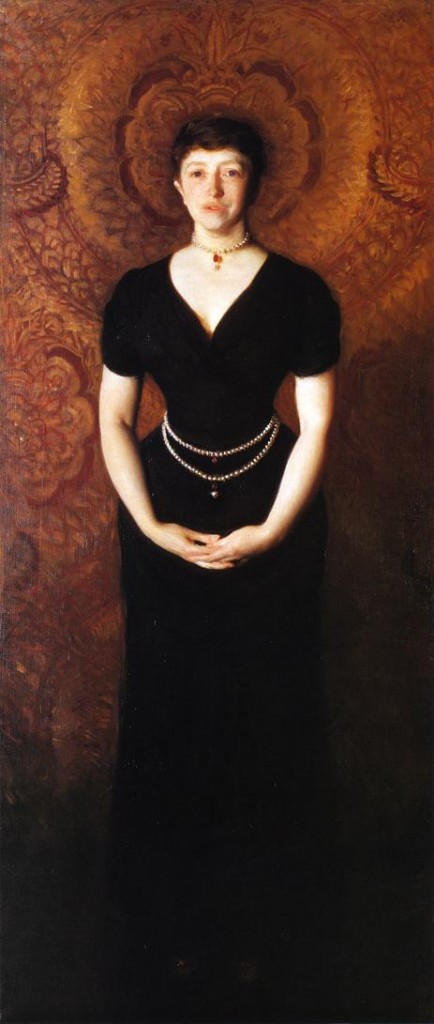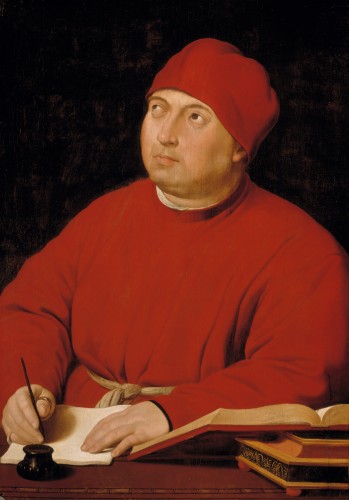Isabella Stewart Gardner. A dashing individualist, with the showmanship of Ziegfeld and the temper of Toscanini, she took Boston by storm. A passion for old master art, young men and music all seemed to come together in one of the world’s finest art collections for a museum of its compact size…

---talks focus on a provocative painting of Isabella Gardner by John Singer Sargent. The portrait depicts Gardner in a form-fitting dress, learning forward in a pose uncharacteristic of a female pillar of turn-of-the-century Boston society. In fact, the painting created a stir in its day for that reason. It’s a portrait that reveals volumes about Gardner and, therefore, serves as a useful vehicle for discussing her life and philosophy, as well as the painting as a work of art. The talk begins with the simple question, “What was so shocking about this portrait?”...Read More:http://www.wallacefoundation.org/knowledge-center/audience-development-for-the-arts/strategies-for-expanding-audiences/Documents/More-Than-Just-a-Party.pdf
The opening night of the museum, January, 1, 1903 was exactly what Isabella wanted it to be: breathtaking. Mrs. Jack had finally won the Battle of Boston; she had also pioneered in the creation of a new kind of museum in America. To posterity, of course, it is the museum and not the social triumph which matters. Former director of the Met, James Rorimer said that Mrs. Gardner was the first person in America to incorporate specimens of Roman, Byzantine, Romanesque, and Gothic architectural detail in a building designed to display paintings.
A rival collector, Henry E. Huntington, who succeeded in getting Gainsborough’s Blue Boy for his San Marino, California library after Mrs. Gardner had failed to buy it from Grosvenor House in London- called Fenway Court the greatest work done by an American woman.
Mrs. Gardner began as a collector with rare books in 1874 under the guidance of Charles Eliot Norton; her bookplate was designed by Augustus Saint-Gaudens. Her acquisitions included a 1481 Dante with plates after Botticelli , a Book of Hours which had belonged to Mary, Queen of Scots, and a holograph manuscript of Paul Revere’s Ride by Longfellow.

Raphael painted this scholar and papal favorite in Rome about 1512, when the count had just become Secretary to the Lateran Coucil. With masterly drawing and insight into personality, the painter fixes his subject as if awaiting some Council decision to record. One of the few portraits painted by Raphael, this was bought for Mrs. Gardner by Bernard Berenson in 1898 from the nobleman's descendents. Read More:http://www.gardnermuseum.org/collection/artwork/2nd_floor/raphael_room/count_tommaso_inghirami/
She put book collecting aside after 1886, when Henry James took her to John Singer Sargent’s London studio to see his famous portrait of the French actress Madame Gautreau- the famous Madame X. When they met she was forty-eight, he thirty-two, impressive and handsome, a member of the New England aristocracy who had traveled all over Europe. Belle promptly commissioned her own portrait, which she unsuccessfully tried to persuade Sargent to declare the artistic equal of the Portrait of Madame X, which it clearly was not.
The portrait was Sargent’s ninth attempt with his restless subject and after eight failings he was ready to jump out a window, smash it with a broadaxe or abandon it altogether. However, Mrs. Gardner insisted that nine was her mystic number, and on the ninth attempt the artist achieved a mutually satisfactory likeness. She wears a plain black dress, a copy of which hung in her wardrobe for years afterward, and the famous pearls with the pendant ruby.
The beauty of her bare arms caused so much comment when the picture was exhibited in Boston that her husband, who appeared to be complacent enough about the unconventional aspects of her friendship with Sargent, never again allowed the portrait to be shown, nor was the public admitted to the Gothic Room, where it hung until after her death.
Sargent traveled with the Gardner’s in Italy, in France, and especially in Spain; he was their constant guest both on Beacon Street and at their summer home in Brookline. When Gardner became trustee and treasurer of the Boston Museum of Fine Arts, Sargent was commissioned to paint the entrance murals there. After gardner’s death in 1898, Sargent was Mrs. Jack’s constant companion when he was in America. Their romance is the subject of a 1951 novel, The Lady and the Painter, by Eleanor Palffy, who asserted that the relationship was platonic. A century later it cannot matter much.





 COMMENTS
COMMENTS